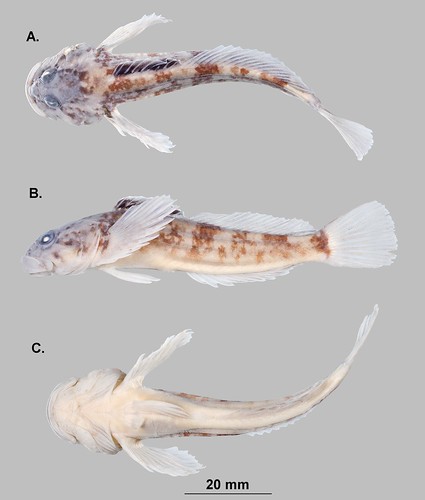
U.S. Forest Service scientists at the Rocky Mountain Research Station in Missoula, Mont., have identified a new species of fish—the cedar sculpin (Cottus schitsuumsh). Although thousands of new species are described by scientists each year, only a small percentage of them are animal species, and even fewer are found in the United States, underscoring the importance of this discovery.
Freshwater sculpins, with their characteristic large heads and fins, are bottom dwellers that can be found in cold, fast-moving streams throughout North America. Biologists have long suspected that there were undescribed species of sculpins in the Upper Columbia River Basin, but lacked the tools to recognize them. Cedar sculpin populations were previously thought to be shorthead sculpin (Cottus confusus), an understandable misidentification given that sculpins are notoriously difficult to identify based on their physical features.
“Through our collaboration with the University of Montana, we uncovered morphological and genetic evidence demonstrating that two species have been masquerading under a single name for over 50 years,” said Michael Young, a Forest Service research fisheries biologist.
The new species of sculpin was discovered in the Coeur d’Alene and St. Joe River basins in Idaho and part of the Clark Fork River Basin in Montana. In naming the species, the scientists consulted with elders of the Coeur d’Alene Tribe, whose historical homeland overlaps with the current range of this fish. The scientific name for the species, Cottus schitsuumsh, is derived from the name for the Tribe, Schitsu’umsh, which means “those who were found here.” The common name refers to the western redcedar, a tree often found along streams in this region.
While not commercially valuable in and of themselves, sculpins are well-known to anglers as a food source for big trout—a famous fly pattern, the muddler minnow, is designed to resemble a sculpin—and as indicators of water quality. The cedar sculpin is abundant in tributaries that also support westslope cutthroat trout and bull trout.
Forest Service scientists and their partners believe that much hidden diversity remains among sculpin populations throughout the Western U.S., with additional species waiting to be identified. They are dedicated to helping unravel these mysteries in order to conserve and sustainably manage our natural resources.

